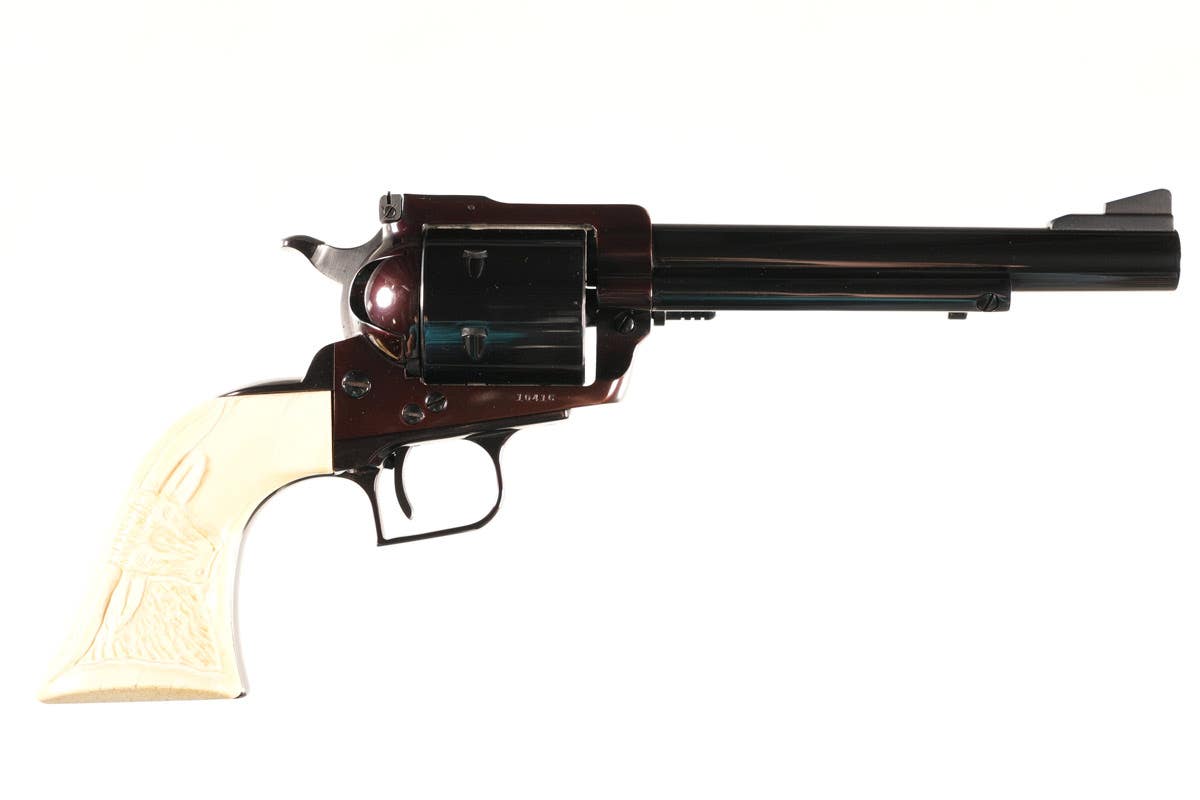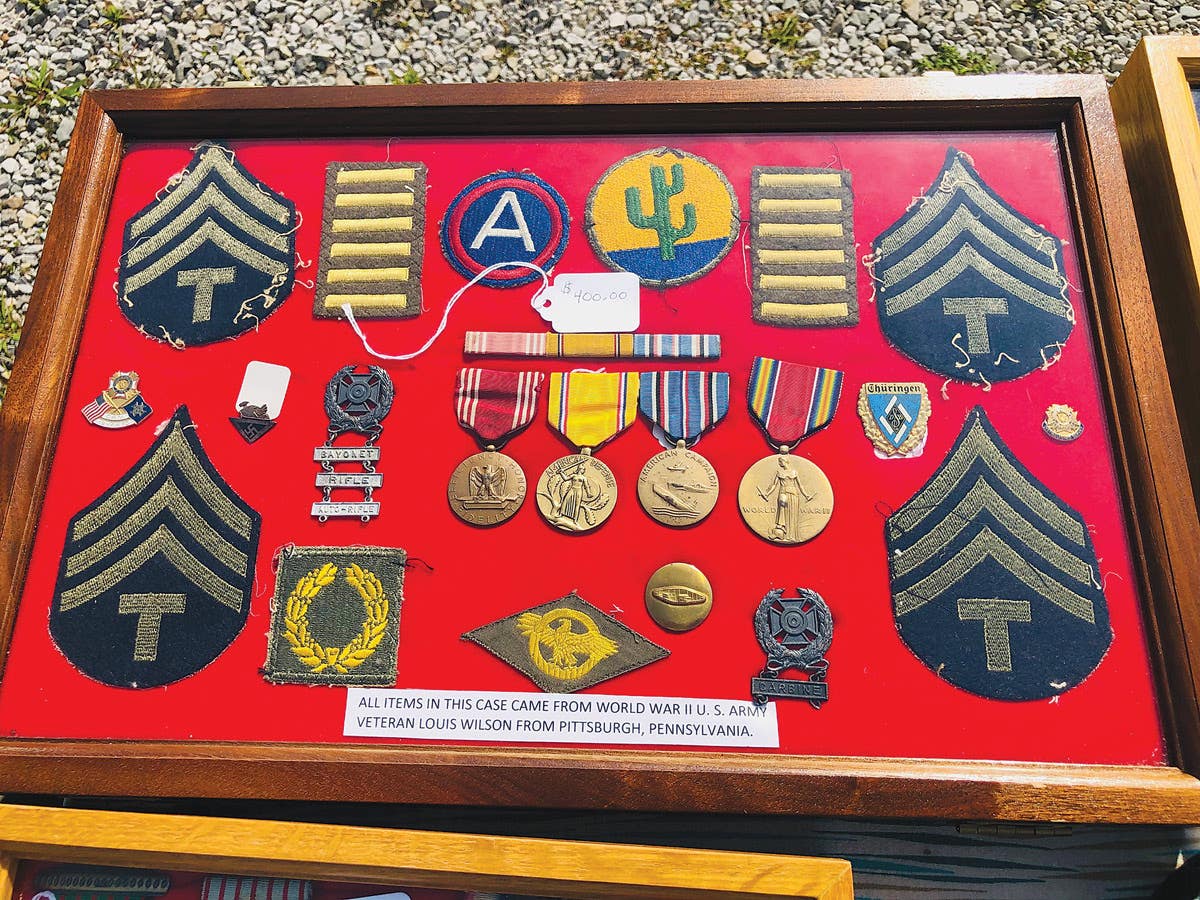Microscope on a Collector’s Habits
Years ago, collecting revolved around watching the mailbox. When the post carrier finally delivered a favorite dealer’s printed catalog, the devout collector would stop whatever he or she was doing,…
Years ago, collecting revolved around watching the mailbox. When the post carrier finally delivered a favorite dealer’s printed catalog, the devout collector would stop whatever he or she was doing, pour over the pages while simultaneously making their way to the telephone. While still scanning the catalog, the collector would dial (or push the buttons) the dealer’s number… hoping not to get a busy signal. Oh how things are different in 2013!
FOR SOME, IT’S ALL NEW
I try to be cautious about bemoaning “how things used to be.” I get enough of that when I visit my parents each week. Sure, on the surface, it reflects a warm nostalgia, but underneath, I think it reveals my fear that I am not keeping up with changes, or worse yet, I am growing too old to accept the changes. Regardless of my age—or my openness to change—if I want to stay on top of the collecting curve, I have to be willing to explore how dealers and collectors are connecting.
Whereas I haven’t seen a rotary telephone in years, I still depend on telephonic communication to connect with dealers and collectors. Hardly a day passes that my cell doesn’t vibrate with a call from my “network.” Very little of my collecting is done by phone, though. Most of those calls revolve around a bragging moment or inquiring if I am available to buy someone lunch as they pass through my town. Nice moments, but my phone really doesn’t play much of a role in my collecting business.
Like so many others, email has become my primary mode of communication with collectors and dealers. The Post Office still plays a role in my hobby but is no longer the source of delivering collecting possibilities. I only know of a handful of dealers who send out printed lists or catalogs—and most of those as a supplement to where their real business activity occurs: On their websites.
For many years now, my morning begins with a scan of new listings on eBay. I will admit, however, that collecting model has really changed in the last decades. I know I sound like an “old-timer” when I refer to the “good old days of ebay.”
Other old timers share memories of low fees, very few “restricted” items, sleepers found mis-listed and just not a lot of competition. The “good old days” of ebay unearthed named Distinguished Service Crosses, spectacular attic-found WWII German helmets, inert WWI grenades, Jeeps (like the rare Ford Pygmy!), and relics of all sizes. Even though the site continues to flourish, offerings have condensed to items that are easily photographed and shipped, conform to a myriad of ebay-imposed rules and mass-produced reproductions. Sure, there is the occasional great item that appears, but the chance of snagging a bargain has nearly disappeared. The time I invest in scanning ebay doesn’t pay off in collecting rewards the way it did 10 years ago.
Despite this, my daughter-bookkeeper informs me, I am spending more on relics than I did 10 years ago. After signing my tax payment and sending it to the state and Feds, I reviewed her printout of my 2012 purchases. She was right—I spent more last year on collecting than I had in the few years prior. What was interesting, however, is where I was spending my collecting money.
DISTRIBUTING MY COLLECTING DOLLARS
My daughter has been my bookkeeper for about six years, so I can only accurately speak to that time. For the sake of discussion, I am going to guess at my buying style from 10 years ago (2003).
In 2003, I had been an eBay buyer/seller for five years. My buying revolved around checking the ebay listings every day. I had just discovered sniping programs. I tried to sell as much as I bought (that usually didn’t happen), and I paid for each purchase with a personal check or money order. Even though I bought a lot through ebay, I still spent a lot of time going to antique shops searching for relics. So, I am guessing that about 75% of my purchases were through ebay and about 25% directly from dealers, either at shows or shops.
Six years ago, my collecting purchases (in dollars) through ebay sales had grown to 83%. This was followed by about 15% of my collecting expenditures on book purchases. I spent only 2% with dealers, either through catalog/website purchases or at shows.
Last year, my ebay purchases fell to about 34% of my collecting expenditures while my dealer-direct purchases grew to a whopping 62%. My book purchases fell to 4% of my total acquisitions. What happened?
As far as ebay is concerned, most of the old-timers (for this discussion, anyone who has been collecting for more than 10 years) will tell you, ebay is much different today than it was a decade ago. Simply put, it just isn’t fun anymore. There is so much more low-quality stuff flooding each category that it has become a chore to scan them. The rules, regulations and increased fees are geared toward driving the casual collector away rather than embracing them as the mega-site had done in its infancy.
Why the drop in book purchases? As an editor and a publisher, I cringe to admit this: I can access a lot of information via the Internet. I don’t have to buy every book that is printed on a given topic any more. Furthermore, having moved cases and cases of books many times, I am wising up to the idea of “culling the herd.” When I left Missouri a couple of years ago, I made substantial donations of military books to the local library and a fledgling parochial school. My thought was this: If I didn’t want to carry those books all over the nation, maybe they could help foster some interest in our hobby if they were available to students and the public.
The big indicator of personal change, however, was that huge rise in purchases from dealers. In 2012, I attended five shows: The MVPA International Convention, the Show of Shows, the MAX Show, the Battlefield Show (St. Paul, Minnesota), the Iola (Wisconsin) Military Vehicle Show and the Civil War Show in Mansfield, Ohio. At most of those shows, I had pre-arranged purchase pick-ups but also made buys as I discovered treasures at tables or booths. In addition, I went to a handful of gun and antique shows, but mostly for entertainment rather than serious buying.
I do still get a few catalogs via “snail mail:” Advance Guard Militaria sends me one about four times a year, and my friends at Rock Island Auctions are always kind enough to send me their stunning catalogs for their premier sales. Just like I did in the old days, I drop whatever I am doing to look through these when they arrive.
Most of that 62% dealer-direct purchase amount, however, was spent on purchases made through dealers’ websites. Each of the sites where I have spent the most money has some sort of “openings” at a designated time. This strategy seems to draw me back time and time again as I experience a sense of “land rush” urge to get to the site as soon as it opens, scan the items, and make rapid purchases before the next guy clicks “Buy it now.”
When I look at my bookmarks, though, I realize there are many dealers’ sites I haven’t viewed in several years. I probably became discouraged with the sites for any number of reasons: No new items; “sold” items being left up interminably; or no change in prices (an item posted in 2007 remaining unsold for on a website for six years would seem to beg for a price adjustment!).
The sites where I made my purchases in 2012 were ones that regularly update their inventory, but more importantly, have a mechanism built in that informs me when new items are posted. Some do this by posting new items every week on a specified day or time, others send out an email reminder that a new posting will occur at a specific time, while other sites have applications to download that create a pop-up when new relics are available. I even receive a couple of “old-fashioned” lists sent to me via email that are illustrated with good photos, descriptions and prices.
Something I found very interesting: In just 2010, I made five purchases as a result of Internet forums. I can easily explain that one. For me, forum participation had peaked. Though I had been a frequent participant in some very good forums, they, just like ebay, became a bit…h ow do I say this nicely…. “redundant.” Maybe I had just participated too long, but I became weary of the same discussions over and over: “Look at this widget I bought for 25 cents!” would be answered by dozens of “Good job!”, “I like it” and “You saved a piece of history.” Inevitably, someone would chime in, “That widget doesn’t look right.” A lengthy discussion about the 25-cent widget would follow. Call me jaded, but after a few years, the days became too short to follow these discussions. So, my lack of forum buying isn’t really a reflection of what is going on in that market, as much as it is an indicator of my low tolerance of minutia dissection.
COLLECTOR-TO-COLLECTOR SALES
The beauty of our hobby is the ability of collectors to connect with each other. The gray-haired crowd will remember the days of “Der Gauleiter.” Back in the days of typewriters and postage stamps, it was a brilliant compilation of individuals’ lists copied and bound together into a 6”x9” mailing. In about 32 pages, the recipient would receive price lists from as many dealers and collectors looking to sell.
This evolved into the early days of Military Trader and Military Vehicles Magazine where established dealers placed their price lists in the magazines and individuals bought and sold through the classifieds. Even though classifieds have slipped off in both publications, dealers still find both magazines to be very effective tools for reaching the highest concentration of interested eyes.
As time passed, ebay came on the scene, and we all thought it was the end of an era and the start of a new one where we would all buy and sell in the new, democratic-styled “free market.” Many believed the one-to-one auction would drive prices to their “natural levels.” Time revealed, however, that this was far from reality, replaced by a mantra many dealers will recite when describing ebay sales: “Junk sells for high prices and quality sells for below market values.” Many people have abandoned the ebay model in the last few years.
So where have they gone?
ENTREPRENEURS STEP IN
We have all seen a lot of attempts to establish Internet rivals to ebay, only to succumb under the shadow of the giant. Failed attempts to some—the truly entrepenurial —become challenges for innovation. Fortunately, in our hobby, there are many entrepreneurial spirits.
Two different collector-to-collector venues have appeared on the Internet recently, and I have tried both of them. The first is “You List It” located at youlistit.cgmauctions.com. The brainchild of prominent dealer and “History Hunter” Craig Gottlieb, You List It is an ebay-styled site that caters to military collectors. Low listing fees and minor regulation, means that it is a nice, friendly place to buy or sell.
Posting items on You List It requires registering, just as you would on any auction site. Photo upload is simple and you determine the starting bid, where you will ship, shipping costs and length of the auction. Currently, You List It is running a “No Fee” charged special that many people are using to their personal advantage—including me.
I listed four items two weeks ago. The process of entering info and photos was slick… took a few minutes for each listing. Through the course of the 7-day auctions, I had a couple of questions from potential bidders. At the conclusion of the sale, You List It sent a notice to me and the buyer. The actual exchange of money never went through the You List It site, but rather was worked out privately. At the conclusion of the sales, I posted “feedback” for my buyers and they did the same for me. All very simple and very familiar.
I also bought an item via You List It. Bidding was easy, though I haven’t figured out how to employ my sniper program yet. I actually had to bid like I did in 1999—place my highest bid and hope for the best!
Viewing items was easy. The list of items up for bid has thumbnails on the side to allow for quick scanning. When one opens an item for more detailed description, more photo thumbnails are enlarged with a simple click. For anyone who has bid on ebay, there will be no mystery at all.
The other venue that recently opened to the public is the “AGM Insider” (http://insider.advanceguardmilitaria.com/onlineshowentrance.aspx). Built by Advance Guard Militaria owner Jeff Shrader, the Insider attempts to capture the feel of the military show. Each week, a new “show” opens. When you enter, you will find a gallery with scores of relics (this past week, there were 185 items) listed by individuals. You can use the toolbar on your left to search or sort the listings. When you find an item, you click on it to view larger photos and description. Clicking “Buy it Now” enters you into an immediate contract with the seller. The insider will send you an email telling you purchased the item and another to the seller informing him/her that an item has sold. It is up to the buyer and seller to make their payment arrangements outside of the “show.”
During the first month of shows, AGM has made all registered users on the website Insiders for free. With two “shows” already completed, there seems to be a momentum building. I have taken advantage of the opportunity to list a handful of items and sold one.
Because the Insider is a “buy it now” venue, I think sellers are feeling their way to find the price points that will work. I haven’t found too many bargains at the first two shows, but the quality is high and I think sellers will be figuring out prices that work over the next few shows.
What I have really enjoyed about the Insider is the quality of items being listed. Listings are monitored by AGM staff to provide a layer of buyer protection from obvious fakes or questionable items. This will become increasingly difficult as more items are listed on each show, but Jeff assures his customer he is willing to meet the demand for increased vigilance. That, alone, sets the Insider apart from ebay!
Time will tell if either of these two venues take hold. Both Craig Gottlieb and Jeff Shrader have told me they are committed to their respective projects. It is evident from the level of site sophistication, each has invested thousands of dollars to develop their ideas.
I can’t speak for all collectors, but I will say, I am personally experiencing a reawakening of those feelings of excitement and discovery that I felt when I found ebay back in 1998! I won’t make any bold predictions, but my guess is this time next year, my bookkeeping daughter will be asking, “Daddy, why is there such a shift in your collecting expenses to private dealers?” The answer will be two-fold: “You List It” and “AGM Insider.”
Share the passion,
John Adams-Graf
Editor, Military Trader and Military Vehicles Magazine
John Adams-Graf ("JAG" to most) is the editor of Military Trader and Military Vehicles Magazine. He has been a military collector for his entire life. The son of a WWII veteran, his writings carry many lessons from the Greatest Generation. JAG has authored several books, including multiple editions of Warman's WWII Collectibles, Civil War Collectibles, and the Standard Catalog of Civil War Firearms. He is a passionate shooter, wood-splitter, kayaker, and WWI AEF Tank Corps collector.







